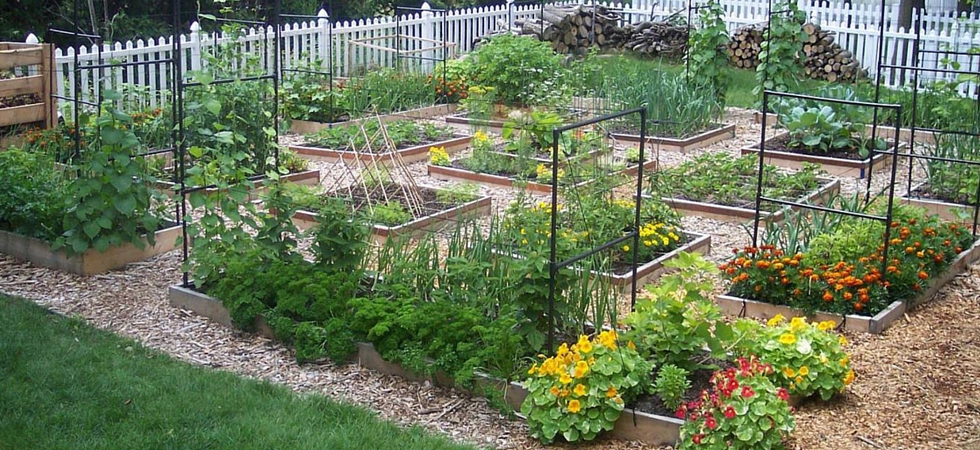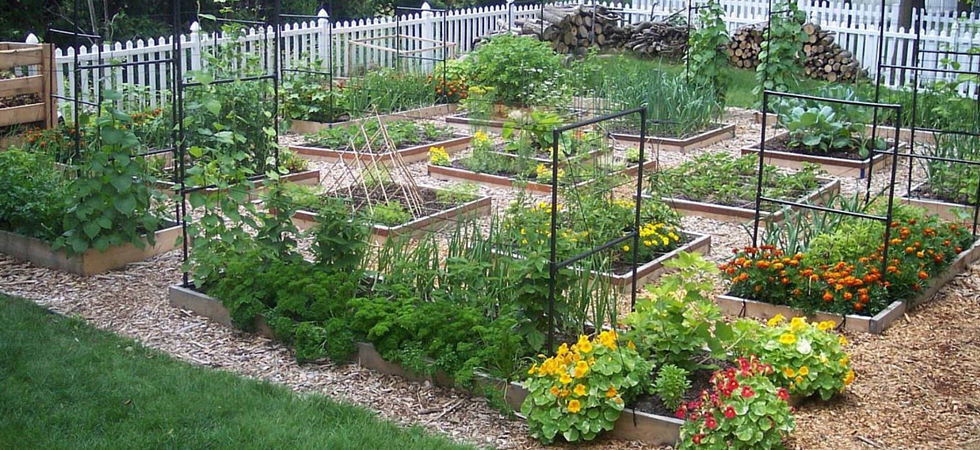Get Going on Gardening – Part 3, by St. Funogas


- Figure out the crop timing for your exact location
The last frost date indicated on the USDA frost maps is only a ballpark figure for your area. You should have a garden journal where you keep track of the date each year for future reference and planning. Some crops such as beets, turnips, potatoes, and radishes can take some frost. Other crops like tomatoes, peppers, and sweet potatoes will be pretty upset if you plant them and they get frosted so don’t take any chances with those.
Timing is important for other reasons as well. Some crops should be harvested after a certain number of days, others should be harvested before they go to seed or they will become pithy and the quality will be greatly reduced. Other crops you want to go to seed so you will have some for next year’s planting. All of this will come with experience so the sooner you can get your garden going, the sooner you can start making mistakes and having successes and getting all of this experience under your belt.
And keep a garden journal, no matter how small and basic! Write down planting dates and harvest dates. It will come in handy in the future, you can bet on it. You’ll need to start tomato and pepper seeds indoors so write the date down when you sow the seeds. If they get too big by the time you plant them outdoors, or they’re not big enough, make a note in your garden journal so you can adjust next year’s seed-planting date accordingly.
And last but not least, the last reason why you need to get going on gardening this year is to…
- Figure out the best weed strategy for your location
The number one reason why people give up on gardening is the miserable weeds! They never show you weeds on the covers of those gardening magazines. All you see are the pictures of the beautiful people smiling in their beautiful gardens. The harsh reality is that weeds exist for the sole purpose of ruining your gardening experience. At least it will seem that way.
But, there are some things you can do to minimize the weeds. And you can even get to the point where the weeds are not a curse. I’m finally at that point. I don’t see weeds any more, I see green stalks of compost material waiting to be added to the pile. I love compost.
There are two main strategies I highly recommend to keep the weeds as your little friends instead of your big enemies.
Weed Strategy #1: Mulch. I have a 10,000 ft2 garden so if it weren’t for mulch, I’d be spending a lot of hours every week out in the garden weeding, or more accurately, zero hours gardening and a lot more hours fishing and kayaking.
Since I hear the word “mulch” misused a lot of the time, let me define what mulch is: Mulch is any kind of material that is laid on top of the soil to prevent weed seeds from germinating and to prevent weeds from growing. Generally it is some sort of organic matter but in reality it can be anything from plastic film to old carpet to newspaper, cardboard, leaves, grass clippings, sawdust, rolls of black “weed barrier,” or whatever you have that will cover the soil and keep the weeds down.
There is a sawmill not far from my house where I can get 50-year old sawdust for free and it makes an excellent mulch for my garden. One section of my garden, when I was reclaiming it from the pasture it had been in a former life, was infested with a noxious perennial weed with a gnarly root system. The only way to permanently get rid of it was to cover it with a 30’ x 30’ tarp, then cover the tarp with sawdust to completely block out the light, and then leave it for a year. I left it for two years just to be sure. On top of the sawdust, I put some containers filled with soil and planted my melon/squash patch there. It worked like a charm and the tarp/mulch combination eliminated the noxious weeds.
Do some web searching to get some ideas on which mulch strategies you may want to try for your garden. In western states where some gardeners set up tube irrigation systems, black plastic sheeting is put down over the water tubes and slits or holes are cut in the plastic for planting strawberries, tomatoes, peppers, and other crops. These slits allow only minimal places for weeds to come up and it is very effective in controlling weeds while retaining moisture at the same time.
In eastern states where deciduous trees are common, leaves are easy to come by and make great mulch for the garden. On my own homestead I have about three acres of pasture and grass which I rake each fall to collect the oak and hickory leaves. I use a large tarp and rake the leaves onto that, then drag the tarp into the garden where I offload the leaves before going out to rake up another load. It’s a very quick way to move a lot of leaves. I also use it with my pickup to get a neighbor’s leaves as well. The beauty of leaves as mulch is that by the end of the growing season, they’ve decomposed quite a bit and improve the soil in the process. The leaf mulch also attracts earthworms who aerate and recycle the soil, greatly improving it in the process.
One last word on mulch. If you’ve ever thrown fresh grass clippings into the compost pile, you’ve noticed they mat down and don’t end up composting very well. I like to take some fresh clippings and put them in the garden instead, in any spots where mulch might need touching up during the summer. They mat down so well that weeds never stand a chance of breaking through. At the end of the growing season, then I toss them into the compost pile.
Weed Strategy #2: The Diamond Hoe. There aren’t too many tools I want to stand on a soap box in Times Square and shout to the world about but there is one. It’s called a diamond hoe or a scuffle weeder (not to be confused with a triangle hoe.) I honestly believe that this tool all by itself could keep more people in gardening than any other item. I’m not certain where you can buy these on a local level because I’ve never seen them in stores. (No, it’s not made by Ronco!) Amazon carries a version for $45 and if you want the real McCoy, you can’t go wrong with the heavy-duty, hand-forged one that I have which has a hardwood handle and a lifetime guarantee from Homestead Iron. One of my daughters tells me I’m so tight with money that my wallet screams when I open it but this diamond hoe has been well worth the $75 I paid for it. The extra-long handle means no bending over, plus, the way it’s attached assures me it won’t be coming apart like garden tools with handles tend to do.
A diamond hoe works like a floor mop: the head always stays in contact with the ground, cutting weeds on both the forward and backward strokes. It’s super-efficient compared to a normal hoe which wastes a lot of energy rising up, then coming back down, and finally doing a tiny little chop right at the end. This tool alone would probably keep more people in gardening than any other since weeds are what make people give up and go fishing or quilting instead.
There are a few other hoes that use this back-and-forth action but what makes the diamond hoe better is the shape of the head. None of the other types I’ve tried come close to the agility and dexterity the diamond hoe offers. You can hoe very quickly when there are no garden plants nearby, but when you get near the tomato plants, for example, you can slow down, and with the very pointy sides of the diamond hoe, you can get right up close to the base of the tomato plant and get the weeds, then as you move farther away from the good plants and back out into pure weed territory, speed back up again.
The other excellent feature about the diamond hoe is that, since the head rides flat on the ground, it will ride underneath whatever mulch you may have down such as leaves or sawdust and cut the weeds off right at ground level. It’s a wonderful invention and I could never garden again without my diamond hoe. One correction on the Homestead Iron website. It says this is for “baby weeds.” That is incorrect. This is for mommy and daddy weeds too and may even work on those teenager weeds. I’ve had mine for four years now. I’ve used this on some very large weeds when clearing a new area in early spring where no mulch was in place. It does very well on large weeds, even things like Queen Anne’s lace with larger taproots.
Summary
Well, that about sums up the important reasons why you should start gardening in 2020 if you’re not yet a gardener.
As I mentioned about your Italian mother-in-law, it’s one thing to have your garden producing poorly while Safeway is still open for business. Your garden is going to produce poorly in the beginning just like every other beginner’s. Over time as you learn more about gardening, get experience, improve your soil, hone in on your variety list, and start to get a handle on the finer points, your garden will begin producing more and more each year. Pretty soon, you’ll be an old pro and people will be knocking on your door with baskets of muffins asking for advice.
Best of all, you can have some salad, squash, and corn-on-the-cob to go with that Raccoon Curry, Deer Mouse Delight, and Ground Groundhog after TEOTWAWKI comes knocking on your door. And TEOTWAWKI ain’t gonna have no basket of muffins in her hand, so Get Goin’ on Gardening!
